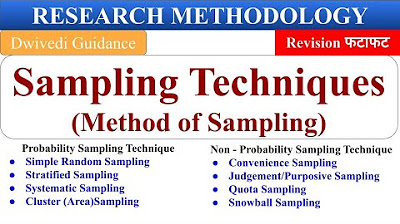Particulate Formation, Evolution, and Fate -Michelson Day 2 Part 3
Summary
TLDRThe script discusses various diagnostic techniques used in sampling and analyzing particles in flames, focusing on the importance of careful sampling to avoid altering particle properties. It covers methods like photo ionization mass spectrometry, transmission electron microscopy (TEM), scanning electron microscopy (SEM), atomic force microscopy (AFM), and helium ion microscopy. The lecturer also explores particle sizing techniques, including Mobility particle sizers and aerosol mass spectrometers, along with spectroscopic methods like IR, Raman, and X-ray based analyses. The summary highlights the need for collaboration between different techniques for comprehensive understanding and touches on the potential issues with traditional sampling methods that could affect the interpretation of experimental results.
Takeaways
- 🔬 The script discusses various diagnostic techniques used in sampling and analyzing particles, emphasizing the importance of understanding what you want to measure before deciding on a sampling method.
- 🌡 It highlights the significance of parameters like temperature and pressure in particle measurement, noting how these can affect the behavior of particles, especially volatile ones.
- 💡 The speaker introduces different methods such as photo ionization mass spectrometry and transmission electron microscopy (TEM) for analyzing particle properties, including their size, structure, and composition.
- 🧬 High-resolution TEM is mentioned as a crucial technique for understanding the fine structure of particles, including the disordered center and ordered shells of aggregates.
- 📊 Atomic Force Microscopy (AFM) is discussed as a method for imaging incipient particles, providing insights into their physical properties like viscosity and shape.
- 🌟 Helium ion microscopy is introduced as an alternative to electron-based techniques, offering different information due to the use of helium atoms instead of electrons for sampling.
- 🔍 The script covers Mobility type measurements, such as the Scanning Mobility Particle Sizer (SMPS), which helps in obtaining particle size distributions by extracting particles from a flame and analyzing their mobility.
- 🌪️ The Aerosol Particle Mass Analyzer (APM) and the Centrifugal Particle Mass Analyzer (CPMA) are presented as techniques that measure particle mass independent of their shape or charge.
- 🌡️ The potential issues with sampling methods are discussed, including how the act of sampling can perturb the flame and affect the chemistry and particle properties being measured.
- 🔬 The importance of combining different diagnostic techniques is emphasized to gain a more comprehensive understanding of particle behavior and properties.
Q & A
What is the primary focus of the Diagnostics discussion in the script?
-The primary focus of the Diagnostics discussion is on sampling techniques and the artifacts associated with sampling in the context of particle measurements and analysis.
Why is it challenging to measure highly volatile particles using certain techniques?
-Measuring highly volatile particles can be challenging because if a technique requires a vacuum, the particles might vaporize, making it difficult to accurately measure them.
What factors should be considered when sampling particles for measurement?
-Factors to consider when sampling particles for measurement include the properties of the particles, the desired parameters to measure, environmental conditions like temperature and pressure, and the potential need for techniques that do not perturb the sample or the surrounding environment.
What is photo ionization mass spectrometry and how is it used in the context of particle sampling?
-Photo ionization mass spectrometry is a technique used to analyze particles by ionizing them with a laser and then analyzing the resulting ions using mass spectrometry. In the script, it is used to sample particles from a flame using a quartz probe, creating a beam of particles that are then ionized and analyzed.
How does transmission electron microscopy (TEM) contribute to understanding particle structure?
-Transmission electron microscopy (TEM) allows researchers to send an electron beam through a sample, providing high-resolution images of the particle structure. This technique can reveal the morphology of particles and even allow for 3D imaging through tomography.
What is the significance of using a quartz probe for sampling in flames?
-A quartz probe is used for sampling in flames because it can withstand high temperatures without melting and is less reactive than metals. This allows for the extraction of particles without significant alteration of their properties.
How does atomic force microscopy (AFM) differ from TEM and SEM in analyzing particles?
-Atomic force microscopy (AFM) differs from TEM and SEM as it uses a mechanical mechanism with a physical tip that scans across the sample, detecting deflections as it encounters features on the surface. This allows for the imaging of particles and can provide information about their physical properties, such as viscosity or shape, on a nanoscale level.
What is the purpose of the skimmer in the sampling process described in the script?
-The skimmer in the sampling process serves to create a supersonic expansion of the gas carrying the particles, which cools and dilutes the sample before it enters the vacuum chamber for analysis.
What are some of the limitations of using a TEM grid for sampling very small particles in flames?
-Using a TEM grid for sampling very small particles in flames can be challenging because the real incipient particles, which are the smallest particles, are hard to sample accurately with this method. The grid may not capture these particles effectively, and larger aggregates are easier to sample.
How does the script suggest improving the understanding of particle formation and measurement?
-The script suggests improving understanding by combining different measurement techniques and collaborating with others who have different expertise or access to various instruments. This multi-technique approach can provide more comprehensive insights into particle formation and properties.
Outlines

This section is available to paid users only. Please upgrade to access this part.
Upgrade NowMindmap

This section is available to paid users only. Please upgrade to access this part.
Upgrade NowKeywords

This section is available to paid users only. Please upgrade to access this part.
Upgrade NowHighlights

This section is available to paid users only. Please upgrade to access this part.
Upgrade NowTranscripts

This section is available to paid users only. Please upgrade to access this part.
Upgrade NowBrowse More Related Video

Particulate Formation, Evolution, and Fate -Michelson Day 3 Part 1

Probability & Non-Probability Sampling Techniques - Statistics

Particulate Formation, Evolution, and Fate -Michelson Day 2 Part 2

sampling techniques, types of sampling, probability & non probability sampling, Research methodology

Populasi dan Sampel serta Teknik Pengambilan Sampel

Kuliah Statistika Industri | Teknik Sampling
5.0 / 5 (0 votes)